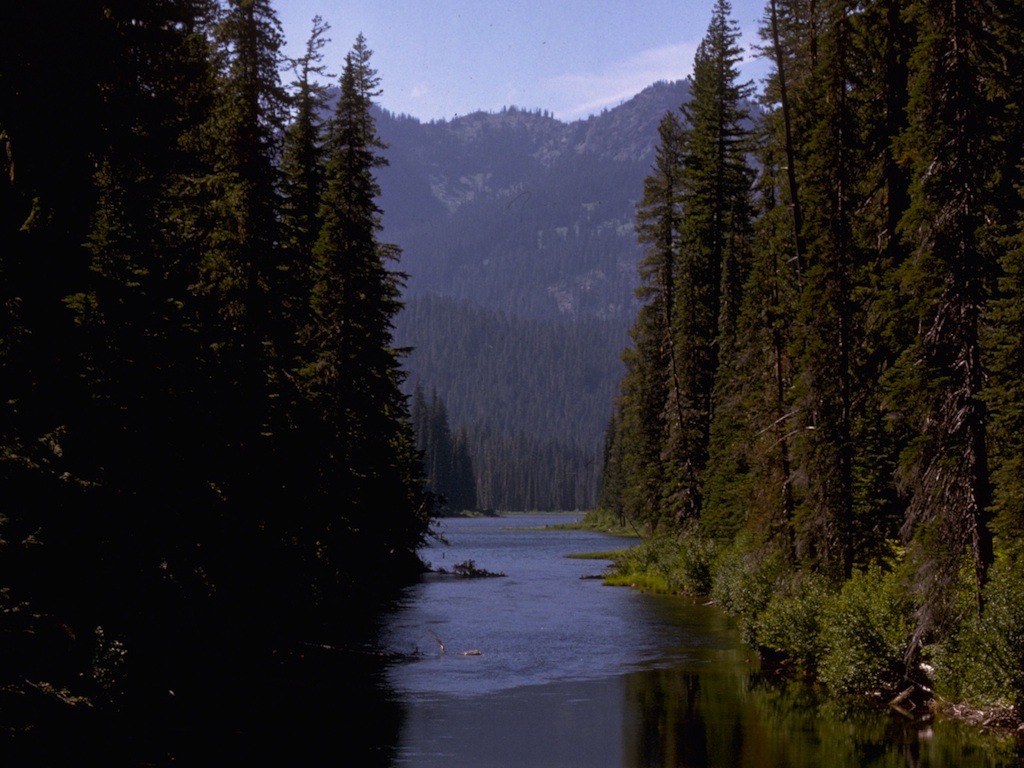
Conserving Water, the Driving Force of Nature (Op-Ed)

Carter Roberts is president and CEO of the World Wildlife Fund-U.S. This article first appeared on the Skoll World Forum, published in Partnership with the Thomson Reuters Foundation. Skoll World Forum contributed this article to LiveScience's Expert Voices: Op-Ed & Insights.
In a rural Guatemalan village, coffee growers who once earned their living by simply selling sun-dried beans now market coffee that is brew-ready: it is de-husked, roasted, ground and packaged. By selling a finished product, the growers not only earn more money, they also have less need to clear land for additional coffee plants, because they can extract more value from the acreage they already have under cultivation. And less timber-cutting means better water quality in nearby rivers and in the fragile Mesoamerican Reef, downstream in the Gulf of Mexico.
In China's Yangtze basin, "wetland ambassadors'' promote conservation as part of a rapidly emerging movement to protect a river system that supplies water to more than 400 million people.
And on Australia's Queensland coast, once-competitive sugarcane farmers are working together to help protect the magnificent Great Barrier Reef by sharing innovative agricultural practices.
These are just three examples from many that show how people working together make a crucial difference in addressing the world's increasing natural-resource scarcity. The security of global access to water — perhaps the most precious natural resource of all — is of particular concern.
Pollution, poor management, inefficiencies and over-use are real challenges to water security today, while population growth, drought and climate change pose imminent threats to water sources and the ecosystems, communities and businesses that depend on them.
But here's the good news. Earth's accessible fresh water, all 22,312 cubic miles (93,000 cubic kilometers) of it, is infinitely renewable. There is enough water to meet our environmental, physiological and economic needs. Even better, we already know how to fix many of the world's water problems by treating, moving, conserving or replenishing water.
Sign up for the Live Science daily newsletter now
Get the world’s most fascinating discoveries delivered straight to your inbox.

So what we need now is a watershed moment. It's time for a new era of cooperation and action to conserve natural resources — including, but not limited to fresh water — that begins with assessing and valuing the countless invaluable services these resources provide that make our very existence possible.
Since 2007, The Coca-Cola Company and World Wildlife Fund (WWF) have worked together to help conserve freshwater resources around the world. We have helped conserve seven of the world's most important freshwater basins, improved water efficiency and reduced carbon emissions within Coca-Cola's manufacturing operations, and advanced more-sustainable agriculture. [Saving the Planet is Good Business (Op-Ed)]
After six years, the outcomes of our efforts are encouraging. The Coca-Cola system has improved its water efficiency by 20 percent, and through on-the-ground conservation efforts, the company has replenished more than half of the water it uses in its products annually. Our river-basin conservation work has produced measurable success and, with the help of community partners, has expanded from 11 countries to 49. Working with peer companies, additional NGOs and local sugarcane growers, we helped create the first global metric standard for more sustainable sugarcane production — Bonsucro — which includes parameters for water management.
And while Coca-Cola and WWF have seen progress through the power of our work together, we know there is more work yet to be done — which is why we recently renewed our partnership through 2020 to double-down on these efforts, improving water efficiency by an additional 25 percent, building sustainable value chains and engaging the public in this conversation.
But we cannot do it alone.
Water is too big and too important, and our relationship with it too complex, for any single entity or partnership to tackle the globe's water shortages and stressors in isolation. Business, government, NGOs and civil society must collaborate as never before to make the tough decisions and investments that will ensure nature's value is integrated into public and private decision-making processes.
This means committing to a much higher level of natural-resource stewardship. It means improving water infrastructure, and building smart infrastructure where it doesn't exist. It means making tough decisions on the best use of available water supplies. And, it means acknowledging the true value of water and the services that deliver it to our homes and business — and paying a commensurate price for those services.
Leonard Da Vinci wrote that water is the driving force of nature. And in a world too often marked by our divisions, water may well be the single element that connects us, for life simply cannot exist without it. It is water that gives shape to the canyons and life to the seas, and water that allows the rainforests and the clouds and the world's most iconic species to thrive. So in order to help ensure a water-secure future for the planet, we must all become a driving force for better, smarter water stewardship. Working together, I know we can do it.
This article originally appeared as "The Driving Force of Nature"on the Skoll World Forum on Social Entrepreneurship, a premier international platform for accelerating entrepreneurial approaches and innovative solutions to the world's most pressing social issues. The views expressed are those of the author and do not necessarily reflect the views of the publisher. This version of the article was originally published on LiveScience.










